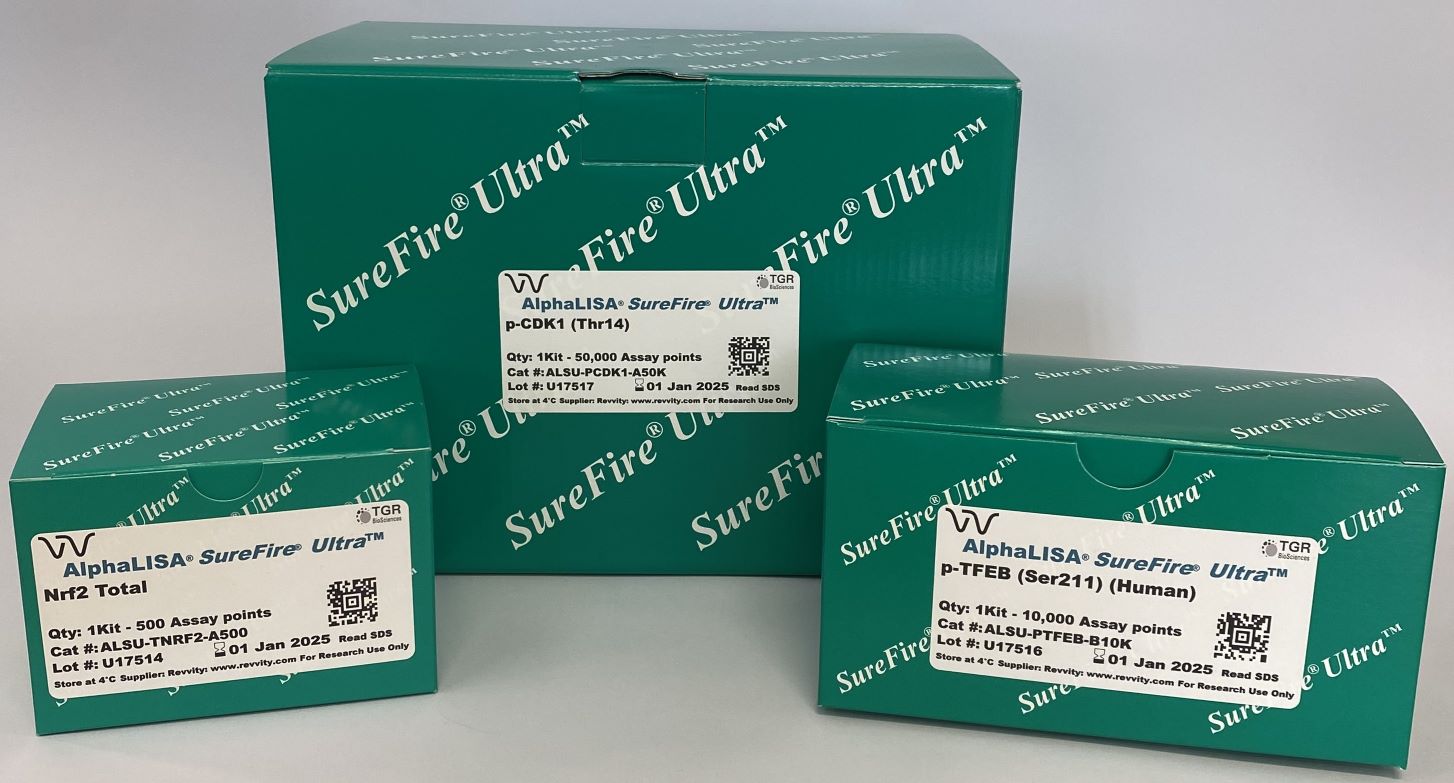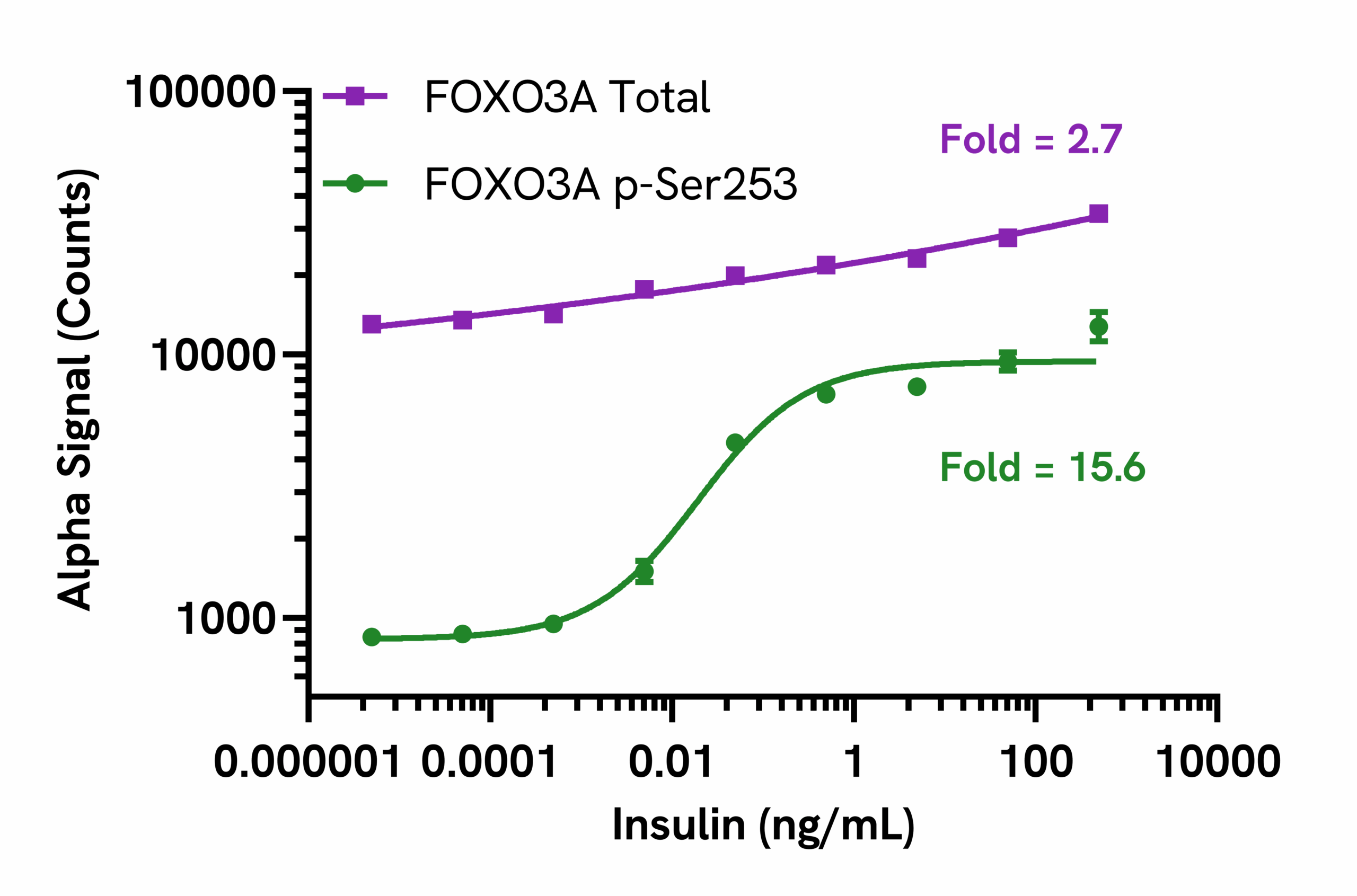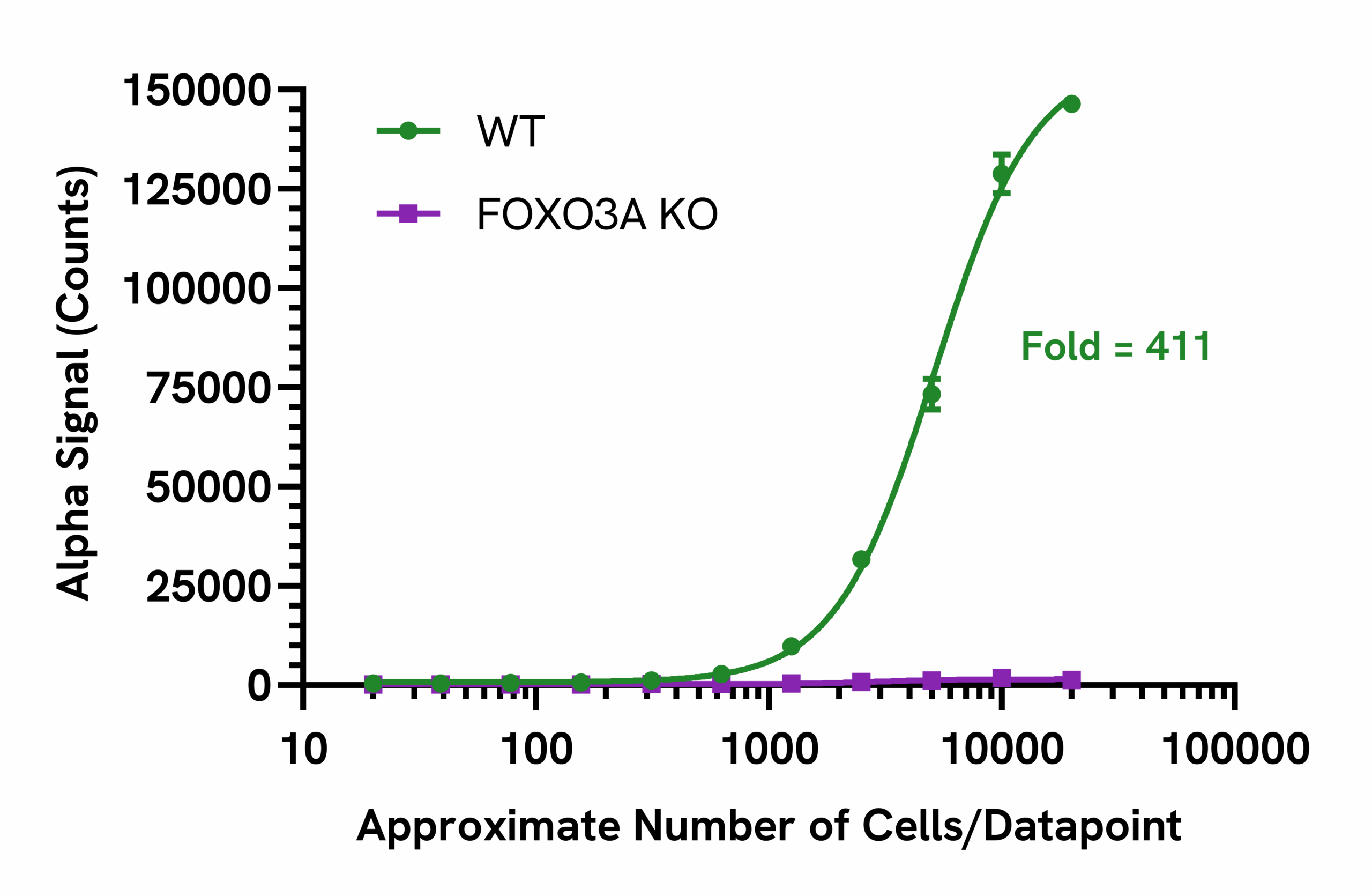Assay points.
-
ALSU-PFOXO3-A500
500
-
ALSU-PFOXO3-A10K
10,000
-
ALSU-PFOXO3-A50K
50,000
-
ALSU-PFOXO3-A-HV
100
Assay Principle
The AlphaLISA™ SureFire® Ultra™ assay enables the rapid and sensitive detection of total and phosphorylated cellular proteins. AlphaLISA™ assays utilize two bead types: Acceptor Beads and Donor Beads. The Acceptor Bead is coated with a proprietary CaptSure™ agent to specifically immobilize the assay specific antibody which is labeled with a CaptSure™ tag. The Donor Bead is coated with streptavidin to capture the biotinylated antibody.
In the presence of a target protein, the two target-specific antibodies bring Donor and Acceptor Beads into close proximity. When the Donor Beads are activated by a laser (680 nm), singlet oxygen is transferred to the Acceptor Bead leading to the production of an Alpha signal. The amount of light emission (615 nm) from the Acceptor Bead is directly proportional to the amount of target protein present in the sample. If an Acceptor Bead is not in close proximity (i.e. 200 nm) of a Donor bead, little to no signal is produced over background.
The assay can be executed in a 1-plate or 2-plate assay protocol (Refer to Manual for more details).
1-plate assay protocol: culturing of cells, treatment, lysis and assay are performed in a single well, enabling miniaturization in high throughput screening programs.
2-plate assay protocol: cells are cultured and treated in a 96-well culture plate and lysates are then transferred into a separate plate for assay. This format allows the evaluation of multiple targets from a single lysate.
Technical Specific Data
Data obtained with a 2-plate, 2-incubation protocol. MCF7 cells were seeded at 20K/well in a 96-well plate and incubated overnight. Cells were starved for 2 hours in 1% FBS containing media, then treated with increasing concentrations of Insulin for 5 minutes. Cells were lysed with Lysis Buffer and assayed separately for Phospho (Ser253) and Total FOXO3A levels using respective SureFire® Ultra™ kits. Equivalent to 2,000 cells/datapoint.
Data obtained with a 2-plate, 2-incubation protocol. NIH/3T3 cells were seeded at 40K/well in a 96-well plate and incubated overnight. Cells were starved for 2 hours in 1% FBS containing media, then treated with increasing concentrations of Insulin for 30 minutes. Cells were lysed with Lysis Buffer and assayed separately for Phospho (Ser253) and Total FOXO3A levels using respective SureFire® Ultra™ kits. Equivalent to 4,000 cells/datapoint.
HEK293 wild type (WT) and HEK293 FOXO3A knockout (KO) (Abcam, ab260857) were cultured to confluency in T75 flasks in 10% FBS containing medium. Cells were treated with 80 nM Calyculin A for 1 hour and then lysed in 2 mL of Lysis Buffer. Serial dilutions of lysate were prepared in Lysis Buffer with approximate number of cells/datapoint outlined on the X-axis. FOXO3A Phospho (Ser253) levels were evaluated using the SureFire® Ultra™ kit.
Data obtained with a 2-plate, 2-incubation protocol. HEK293 cells were seeded at 20K cells/well in a 96-well plate and incubated overnight. Cells were treated with 20 μM of LY294002 for 24 hours. Cells were lysed with Lysis Buffer and assayed for Phospho (Ser253) FOXO3A using the SureFire® Ultra™ kits. Equivalent to 2,000 cells/datapoint.
Data obtained with a 2-plate, 2-incubation protocol. MCF7 cells were seeded at 20K cells/well in a 96-well plate and incubated overnight. Cells were starved for 2 hours and then treated with 500 ng/mL IGF-1 for 5 minutes in serum free medium. Cells were lysed with Lysis Buffer and assayed for Phospho (Ser253) FOXO3A using the SureFire® Ultra™ kits. Equivalent to 2,000 cells/datapoint.
Manuals & downloads.
-
PDF
-
PDF
Detection Kit Manual
-
Tech Spec
Technical Data Sheet
Safety Data Sheets
-
Safety Data Sheet (SDS)
Safety Data Sheet EU-EN
-
Safety Data Sheet (SDS)
Safety Data Sheet US





